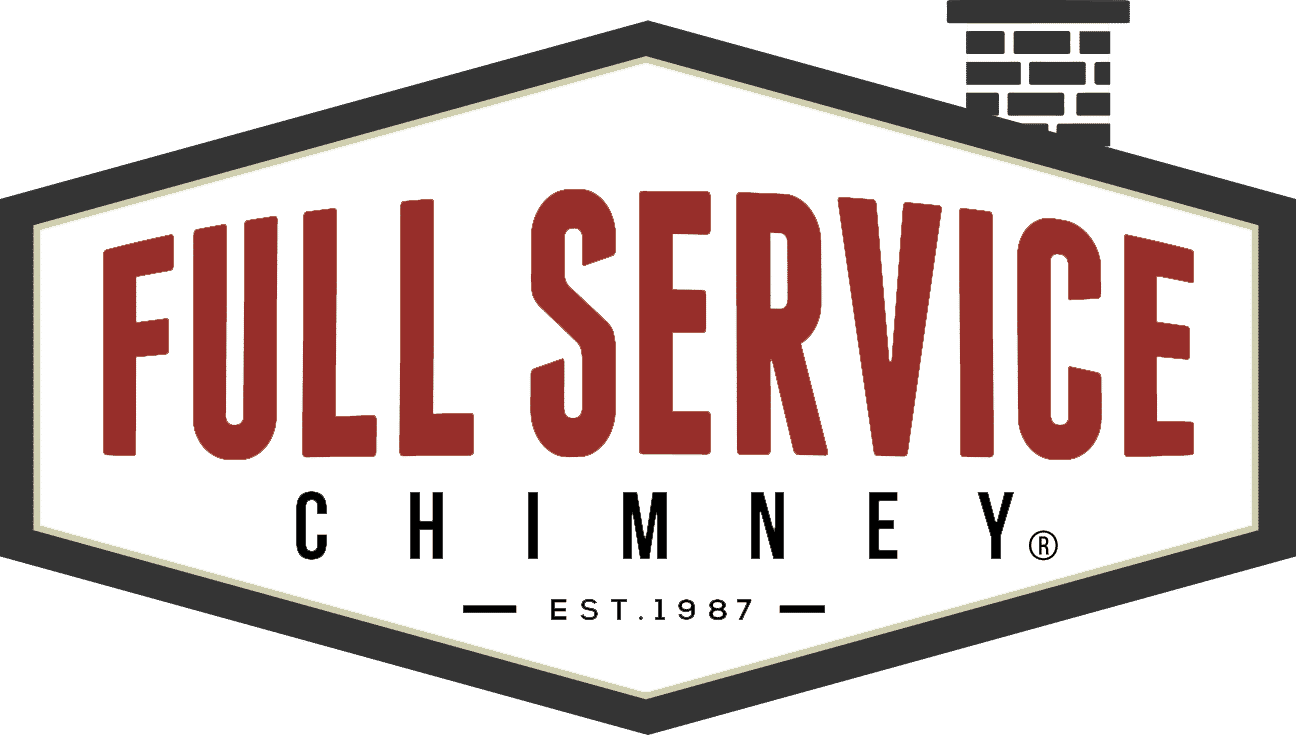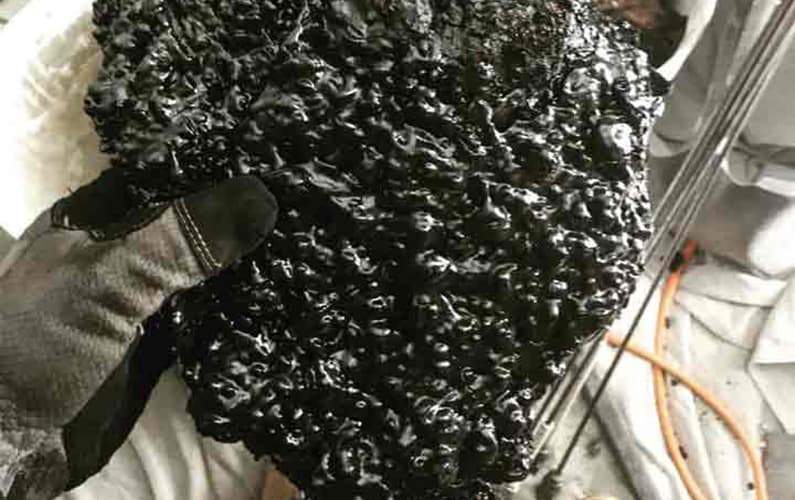When you see a build-up of soot in or around your fireplace, then you can take that as a BIG SIGN that there’s an underlying problem. When it comes to the safety of burning systems in our homes, you know it’s a problem that must be solved.
Here you’ll find a list of warnings and common questions people ask regarding that nasty build-up that happens after we burn fuels in our fireplaces. But some signs spell more trouble than others. Let’s Discover the Dangers of Soot and Creosote.
Table of Contents
Combustion deposits can build up on the damper, smoke chamber, and flue liner. Then begin to loosen and fall into the firebox. This is a sure indication that the fireplace needs cleaning and the chimney needs servicing.
Learn more about our Chimney Maintenance Services
What is Soot?
Scientifically speaking, Soot is a byproduct of incomplete combustion of an organic fuel/material. Usually black or dark brown in color, and can be a powder, flaky, or oily in texture.
“A little soot outside the fireplace is no big deal, right?” WRONG.
Soot and creosote dangers are real. Both substances naturally accumulate in fireplaces and flues; that’s why you need a visit from your chimney service every year to check things out and sweep away any excessive deposits.
Although steps can be taken to minimize deposits, soot is often found in fireplace hearths and creosote in wood-stove chimneys. If cleaned on an annual basis, then the risk and consequences of an unsafe build-up are reduced.
Soot and creosote are byproducts of burning wood. They both accumulate in the flue liner of fireplaces and wood stoves.
However, creosote is unique in that it is mostly tars produced due to the incomplete combustion of wood. On the other hand, soot can result from the poor combustion of oil and gas, and wood.
Suggested Reading: What is Creosote?
Is Soot Dangerous?
Yes, soot and creosote CAN be dangerous. Both are topical and inhalation hazards. People who work in the fireplace maintenance industry must be aware of and avoid chimney systems.
So while these dirty substances do naturally occur, they can cause various health issues for humans. Not to mention if allowed to build-up can cause fires inside your flues.
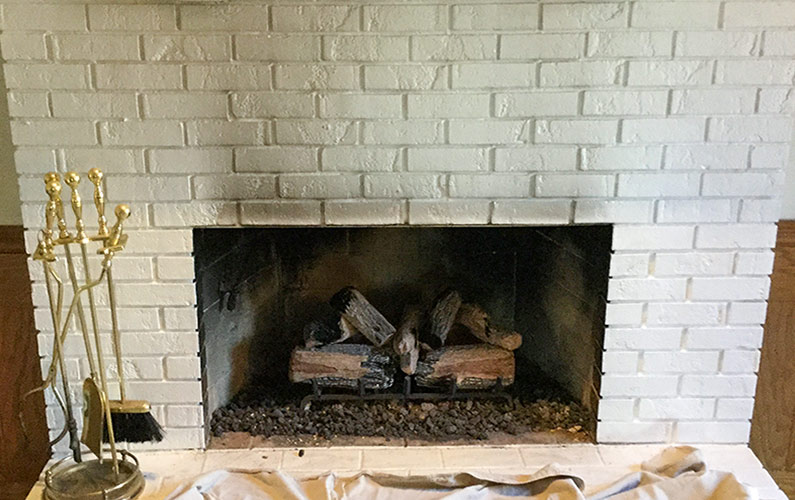
Soot happens but it should NOT be on the outside of your fireplace!
Can You Clean Your Chimney with Fire?
Do not try to burn soot out of your chimney’s flues with fire. We repeat:
Please do not attempt to use fire to clean a chimney. It’s a terrible idea! Here’s why.
Build-up in the flue is greatest from smoldering fires drafting through a cool chimney. If the flue liner is insulated properly with a liner and fires are allowed to burn at a proper temperature, then the residue’s hazards are minimized.
Once a chimney has a build-up of 1/8-inch, the danger of a chimney fire increases. If a fire occurs in a chimney due to combustible deposits, then the result is frequently a damaged flue and fire risk spreading to the walls behind the chimney or even embers reaching the rooftop.
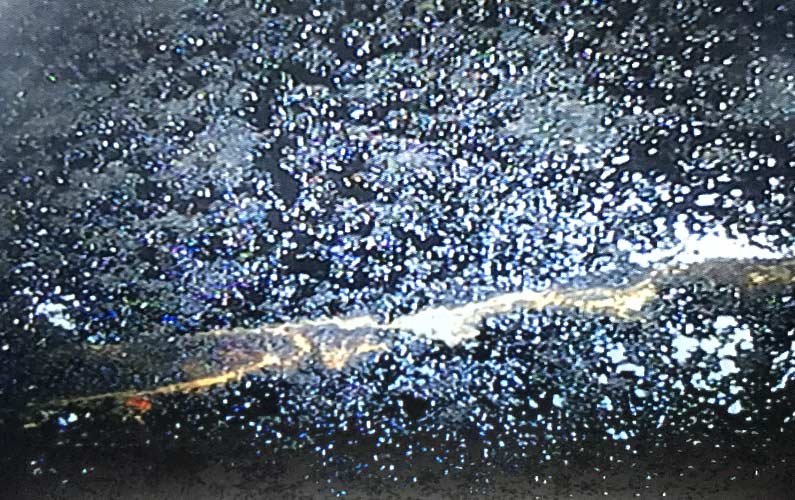
Image shows inside a flue with massive amounts of sticky black residue (creosote) build-up on the walls which started a fire and cracked the ceramic tiles. (Which allows carbon monoxide to enter a home.)
How to Reduce Your Risk
Regular maintenance helps your entire burning system operate at peak performance. Soot is the natural byproduct of the combustion of all wood-burning fireplaces and stoves. A little is expected to show up in the firebox with each fire.
While a little bit of these dirty substances is normal, there are abnormal areas in your home where if soot is appearing, then it indicates a dangerous situation is developing.
Watch for the Warning Signs
A black soot stain is warning you that something is off and the chimney system is not functioning properly.
For example, if any smoke residue appears on your fireplaces mantle, then take it as a serious warning to have your fireplace inspected.
Or if a dark fluid drains down the side of your chimney cap, then there is something going on warrants a chimney inspection.
Your fireplace mantle should NOT have ANY signs of smoke on it.
Even if the mantle staining took years to appear, those spots of black indicate your fireplace is not drafting properly. Heed this warning because it is a dangerous sign! The exhaust that caused the smokey spots to appear on your fireplace also contain carbon monoxide.
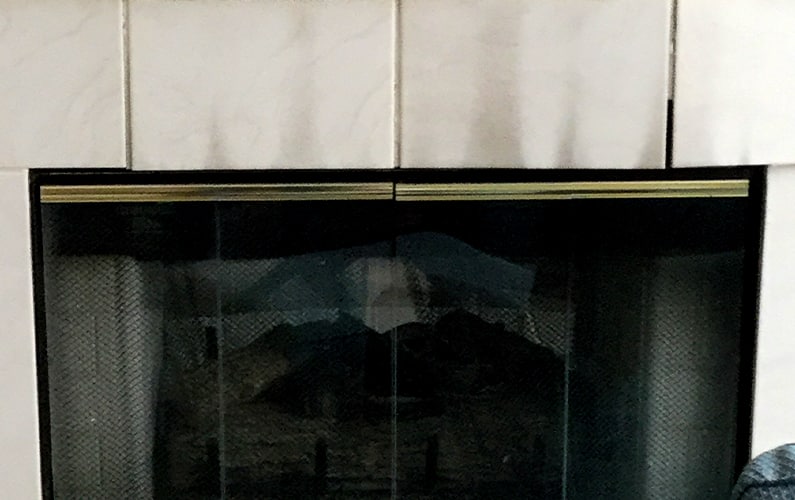
Remember, black soot smudges (as shown in the image) come from incomplete combustion. Even if you try to burn only seasoned wood, some build-up is inevitable. As with all fuels, so it is true with natural gas and wood fuels: if the fuel-air mixture is off, then soot and other byproducts are produced.
Since complete combustion is impossible in the real world, your goal must be:
- Verify that the equipment is installed and operated in accordance with operational instructions.
- You MUST follow the manufacturer’s instructions in regards to annual servicing.
- Be aware of malfunction signs, issues that could result in shorter service life, poor efficiency, fire, or carbon monoxide dangers.
When chimney soot becomes visible, it’s a warning that you could be at risk!
If your fireplace looks like this, it is NOT SAFE for use.
Responsible maintenance is the best solution to your soot problems.
Allow Full Service Chimney to be your friend in the chimney service business. We can help with all your fireplace cleaning needs.
